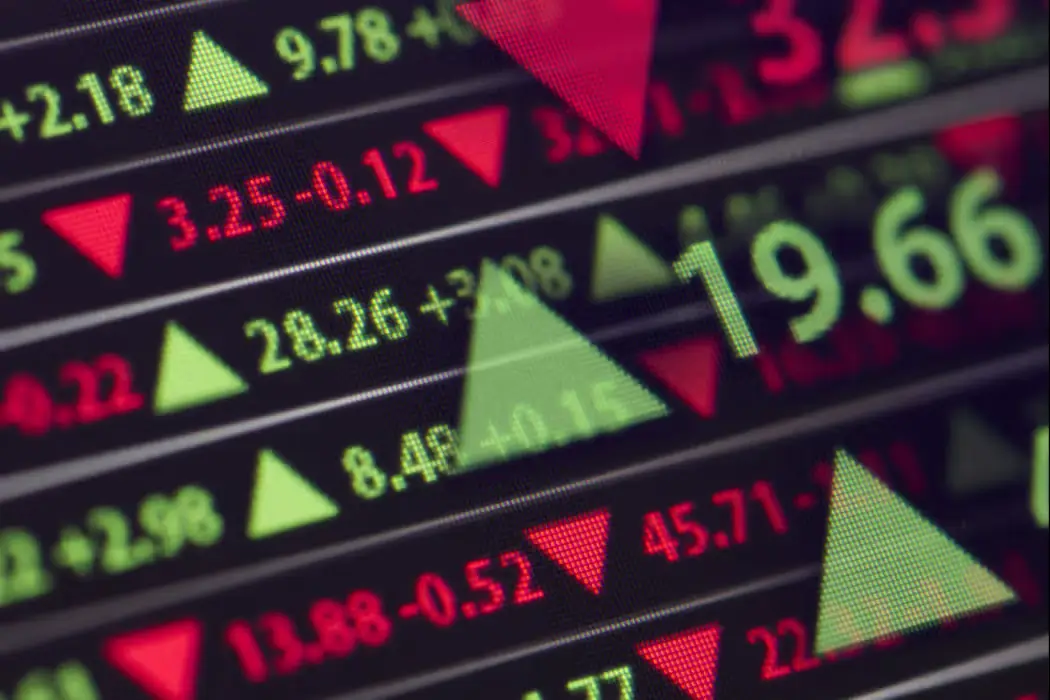
Powell’s Tariff Warning

The financial world is reeling, yearning for a savior to quell the turbulence ignited by President Donald Trump’s sweeping tariff policies. Investors are turning to Jerome Powell, chair of the Federal Reserve, hoping for bold rate cuts to steady the ship. Yet, Powell’s riveting speech at the Economic Club of Chicago delivered a sobering reality check: the Fed isn’t ready to don the cape. ![]() With the specter of stagflation—rising inflation coupled with stagnant growth—looming large, Powell’s measured approach is sending shockwaves through markets. Join us as we dissect why the Fed is holding firm, explore the ripple effects across tech and global trade, and uncover six critical insights every American investor needs today.
With the specter of stagflation—rising inflation coupled with stagnant growth—looming large, Powell’s measured approach is sending shockwaves through markets. Join us as we dissect why the Fed is holding firm, explore the ripple effects across tech and global trade, and uncover six critical insights every American investor needs today.
Tariffs Threaten Stagflation
In his commanding address at the Economic Club of Chicago, Jerome Powell laid bare the perils of Trump’s tariff agenda. He described the tariffs as “significantly larger than anticipated,” warning they could fuel inflation while stifling economic growth, potentially ushering in stagflation. ![]() This scenario poses a formidable challenge for the Federal Reserve, tasked with balancing maximum employment and price stability. Powell highlighted a “complex scenario” where these objectives may conflict, demanding nuanced policy maneuvers.
This scenario poses a formidable challenge for the Federal Reserve, tasked with balancing maximum employment and price stability. Powell highlighted a “complex scenario” where these objectives may conflict, demanding nuanced policy maneuvers.
Stagflation Unraveled: This economic nightmare combines runaway inflation with sluggish growth, squeezing consumers with higher prices and businesses with weaker demand. It’s a policy tightrope with no easy answers.
The World Trade Organization has slashed its global trade forecast, now projecting a 0.2% contraction this year, down from a 2.7% growth estimate. Tariffs are disrupting supply chains, from electronics to automobiles, threatening higher costs for American consumers. Chicago Fed President Austan Goolsbee labeled tariffs a “stagflationary shock,” cautioning they could elevate unemployment while inflating prices.
- Soaring Costs: Tariffs are poised to increase prices for consumer goods, with inflation expectations rising, according to Bloomberg market data.
- Employment Risks: Businesses may cut jobs as tariffs dampen demand, particularly in trade-sensitive sectors like manufacturing.
- Growth Slump: Fitch Ratings projects U.S. growth could plummet to 0.4% by Q4 2025, signaling a sharp slowdown.
Powell’s emphasis on anchoring long-term inflation expectations underscores the Fed’s resolve to prioritize stability over hasty interventions, even as markets clamor for relief. This cautious stance suggests investors should prepare for heightened volatility.

Why Rate Cuts Remain Elusive
Traders in interest-rate futures are optimistic, pricing in a June rate cut and four reductions by year-end. However, Powell’s Economic Club of Chicago speech tempered these expectations. ![]() With the benchmark rate steady at 4.25%–4.5%, Powell stressed the need for concrete data on tariffs’ economic impact—likely not until June—before any policy shifts.
With the benchmark rate steady at 4.25%–4.5%, Powell stressed the need for concrete data on tariffs’ economic impact—likely not until June—before any policy shifts.
Fitch Ratings aligns with this view, forecasting no rate cuts until Q4 2025, when economic growth could falter significantly. Trump’s public pressure, including a social media post demanding Powell’s “termination,” has done little to sway the Fed chair, who reaffirmed the Fed’s independence as a legal cornerstone. Powell is also monitoring a Supreme Court case that could challenge the Fed’s autonomy, adding another layer of complexity.
| Economic Factor | Impact on Fed Policy |
|---|---|
| Tariff-Induced Inflation | Compels Fed to maintain rates to curb persistent price pressures. |
| Economic Deceleration | May prompt future cuts, but only with robust evidence of harm. |
| Market Volatility | Fed unlikely to intervene unless critical markets falter. |
The Fed’s deliberate approach means investors must navigate tariff-driven uncertainty without immediate relief, bracing for a turbulent market landscape.
Tech Titans in the Tariff Crosshairs
The escalating U.S.-China trade war is wreaking havoc on the tech sector, with tariffs and export controls threatening industry giants like Nvidia, AMD, and Intel. China’s drive for technological self-sufficiency is reshaping the landscape, banning U.S.-made CPUs in government procurement and promoting domestic operating systems and databases. ![]() Apple, heavily reliant on Chinese manufacturing, faces significant exposure as tariffs on tech imports loom.
Apple, heavily reliant on Chinese manufacturing, faces significant exposure as tariffs on tech imports loom.
China has greenlit 18 homegrown CPU chips, sidelining Intel and AMD, and is transitioning to six local operating systems to replace Microsoft Windows and 11 domestic databases to supplant Oracle. These shifts signal a strategic pivot that could marginalize U.S. tech firms in a critical market. Additionally, new U.S. export controls on AI semiconductors to China are intensifying pressure on Nvidia, AMD, and Intel.
- Apple’s Exposure: Despite diversifying to Vietnam and India, Apple’s China-centric supply chain remains a vulnerability.
- Chipmaker Challenges: U.S.-produced chips face China’s 125% retaliatory tariffs, while Taiwan-made chips for Apple and Nvidia are temporarily exempt.
- Supply Chain Disruptions: Tariffs could inflate chip costs, impacting consumers and tech companies alike.
TSMC reported a 60% profit surge, but its CFO cautioned about “uncertainties” from potential tariffs, despite $165 billion in U.S. investments. The tech industry’s future hinges on navigating this volatile terrain.

Global Trade Reels Under Tariff Pressure
Trump’s April 2 tariff announcement—a 10% levy on all imports, with higher duties slated for April 9—has sent shockwaves through global markets. While some tariffs were paused for 90 days amid trade negotiations, China retaliated with 34% tariffs on U.S. goods, escalating the trade war. ![]() Stock markets have plummeted, and bond yields have surged as investors seek safe havens.
Stock markets have plummeted, and bond yields have surged as investors seek safe havens.
A Bank of America survey revealed that global fund managers view Trump’s trade policies as the top risk to markets. U.S. consumer confidence sank to a four-year low in March, driven by fears of rising prices and job losses. Businesses, from local retailers to multinational manufacturers, are grappling with supply chain disruptions, with small businesses hit hardest.
Trade War Fallout: Tariffs are driving up costs for everyday goods, from clothing to electronics, with small businesses struggling to absorb supply chain shocks.
Powell described this market turbulence as a “logical response” to policy uncertainty, suggesting the Fed won’t intervene unless systemic risks emerge, such as instability in the Treasury market.
Foreign Investors Pivot to T-Bills
Amid tariff uncertainty, foreign central banks are shifting strategies, offloading long-term U.S. Treasury bonds and amassing short-term T-bills. In February, they sold $19.6 billion in bonds while purchasing $61.6 billion in T-bills, a trend persisting for four months. ![]() This move reflects caution about the U.S.’s long-term economic prospects and a preference for liquidity.
This move reflects caution about the U.S.’s long-term economic prospects and a preference for liquidity.
Japan bucked the trend, acquiring $31.7 billion in longer-dated Treasuries, while China divested $4.8 billion, likely as a trade war countermove. Foreigners hold $8.8 trillion in U.S. debt, with private investors offsetting official sector sales. The next Treasury International Capital report, due May 16, will provide further clarity.
- Liquidity Priority: T-bills, maturing in under a year, offer safety and flexibility for cautious investors.
- Geopolitical Tensions: Some bond sales may reflect retaliation against U.S. tariffs.
- Yield Dynamics: Robust T-bill demand is elevating yields, influencing borrowing costs economy-wide.
College Degrees
Despite economic headwinds, the New York Fed offers a beacon of optimism: college degrees yield a 12.5% return in 2024, surpassing the stock market’s 8% long-term average. Graduates earn a median $80,000 annually, $32,000 more than high school diploma holders, with earnings gaps widening over time. ![]() However, Trump’s threats to cut federal funding for universities like Harvard and Columbia introduce uncertainty.
However, Trump’s threats to cut federal funding for universities like Harvard and Columbia introduce uncertainty.
Rising tuition costs and opportunity costs—wages forgone during studies—challenge affordability, but degrees remain gateways to high-earning careers. Engineering and business majors deliver superior returns, while education yields a modest 6%.
| Major | Median ROI |
|---|---|
| Engineering | 15%+ |
| Business | 12–14% |
| Education | 6% |
| Fine Arts | 8–10% |
Charting the Path Ahead
Jerome Powell’s resolute stance underscores the Federal Reserve’s commitment to data-driven decisions amid tariff-induced chaos. With upcoming economic indicators, such as first-quarter GDP, and a pivotal Supreme Court case on Fed independence in focus, the central bank is navigating uncharted waters. Tariffs are reshaping the economic landscape, challenging tech giants, disrupting global trade, and testing investor resilience. For American investors, businesses, and consumers, the road ahead demands agility and foresight.
To stay ahead of these transformative shifts, explore cutting-edge analysis, real-time updates, and exclusive insights on Trendsnip, your go-to source for navigating today’s economic frontier.

Ibrahim Philip 
Ibrahim Philip is a highly skilled Content Writer with a passion for simplifying complex science and technology topics. Holding a Master's degree from the University of Manchester, he crafts compelling, well-researched content at Trendsnip, making knowledge engaging and accessible to all.
About the Author
Michael
Administrator
Michael David is a visionary AI content creator and proud Cambridge University graduate, known for blending sharp storytelling with cutting-edge technology. His talent lies in crafting compelling, insight-driven narratives that resonate with global audiences.With expertise in tech writing, content strategy, and brand storytelling, Michael partners with forward-thinking companies to shape powerful digital identities. Always ahead of the curve, he delivers high-impact content that not only informs but inspires.







We don’t promote this type of link or product.
Bu yazıda yer alan güvenilir bahis siteleri ile ilgili içerikler her zaman ilgi çekici.